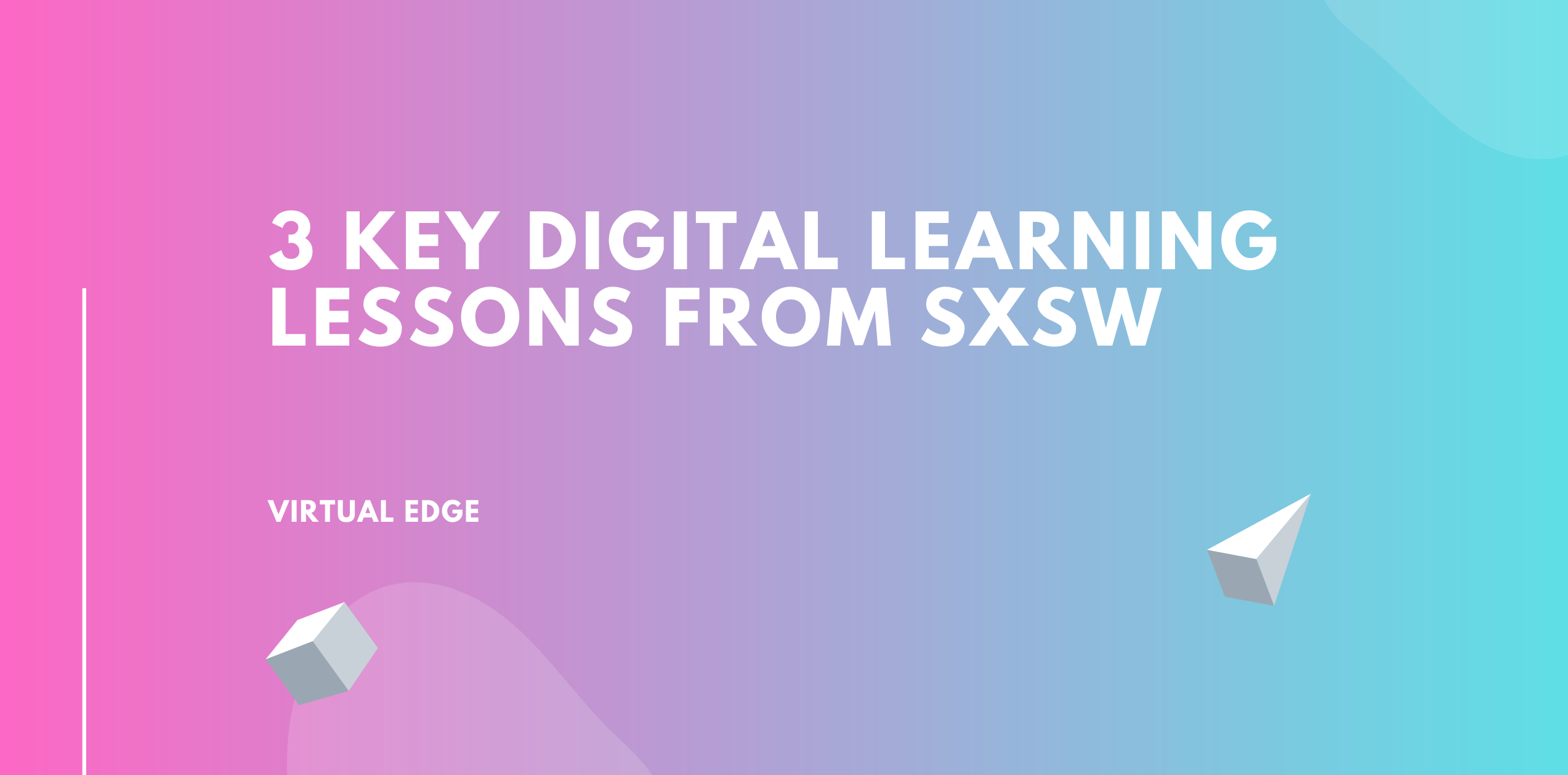When David Stankiewicz, DES, traveled to Austin for SXSW last month, he was in charge of a packed schedule. As a Project Manager of Strategic Programs for IEEE Meetings, Conferences and Events (MCE), Stankiewicz’s plate was very full; he helped oversee 11 sessions, an annual party and the launch of a new virtual events series. In addition to IEEE’s presence in Austin, Stankiewicz aimed to use the conference as an opportunity to immerse himself in the emerging interactive trends and tools that will shape his future.
“Being an event producer doesn’t always allow me to take off my organizer hat and enjoy an event’s content. However, SXSW offers a great opportunity to look at the technology landscape from the attendee perspective,” Stankiewicz said. “The festival is a preview of how leaders from major corporations and start-ups are changing the digital space and how that evolution will impact associations like ours.”
3 Key Digital Learning Lessons From SXSW
Stankiewicz and the IEEE MCE team empower the organization’s volunteer members to run an astonishing number of conferences. Each year, those members arrange approximately 1,600 conferences around the world, and the programming covers 47 different engineering disciplines. I caught up with Stankiewicz earlier this month, and he was busy combing through his notes from the conference to determine what he could apply at IEEE. Here’s a look at three key lessons he brought back to the office from Austin.
Business education should mirror consumer entertainment.
When Stanciewicz reviewed the SXSW schedule, he immediately highlighted “Hit A Home Run With Content Creation And Streaming” as a must-attend. As he works to develop engaging digital content for IEEE members, he wanted to hear how sports/entertainment names like WWE and MLB are developing their own digital strategies.
“The panel was dedicated to helping everyone in the room understand how consumer content consumption will change the way corporations and associations approach shooting, editing and sharing videos with their customers,” he said.
“Think about the way the average person watches sports highlights on ESPN or replays their favorite sketches from Saturday Night Live,” Stanciewicz said. “That person is looking for the same kind of engaging experience and convenience when they’re watching a webinar or participating in a virtual conference.”
As more people spend more time watching videos on their tablets and smartphones, Stanciewicz also highlighted the importance of learning which devices and platforms attendees prefer. “People aren’t tied to their desktops,” Stanciewicz said. “They want the same convenient viewing experience anywhere and on any device.”
Shorter means more successful.
The panelists also reinforced that IEEE is on the right track with one important element: length. “We’ve embraced a trend to shorten our webinars,” Stankiewicz said. “Under 30 minutes is ideal. We’re aiming to jam pack tons of information into the least amount of time as possible. I see it as a trend in the industry, and the wave of the webinar future. Shortening attention spans forces organizations to re-think how they deliver content.”
An example of that less-is-more approach coming to life is IEEE’s “Tools In Ten” YouTube series, a collection of videos designed to introduce volunteer members to new technologies that can elevate the attendee experience. All of the videos have to satisfy two key requirements: (1) informative and useful content and (2) delivered in under 10 minutes.
Social timing requires testing.
“At IEEE, we find social media timing can be a challenge,” Stankiewicz said. “We have a Facebook community with an editorial calendar, and we’re constantly trying to determine the best dates and times to post. The global footprint of IEEE makes that tough. If I post at 7 AM on the East Coast in the United States, our members in other parts of the world may miss it.”
When he attended “Pushing Digital Boundaries”, a session co-hosted by the two minds behind wildly successful Vine series “White Ninja”, Stanciewicz was happy to hear Jameson Parker and Tyler Funk discuss their efforts to determine when to post their videos. Their advice? Test. Test. And then, test some more.
“Many have given their expert opinion, but as far as I can see, there is no formula,” Stankiewicz said, after listening to the panel. “You have to understand your audience. Ultimately, it’s going to come down to a process of experimentation to figure out when you’re most likely to increase your visibility.”
